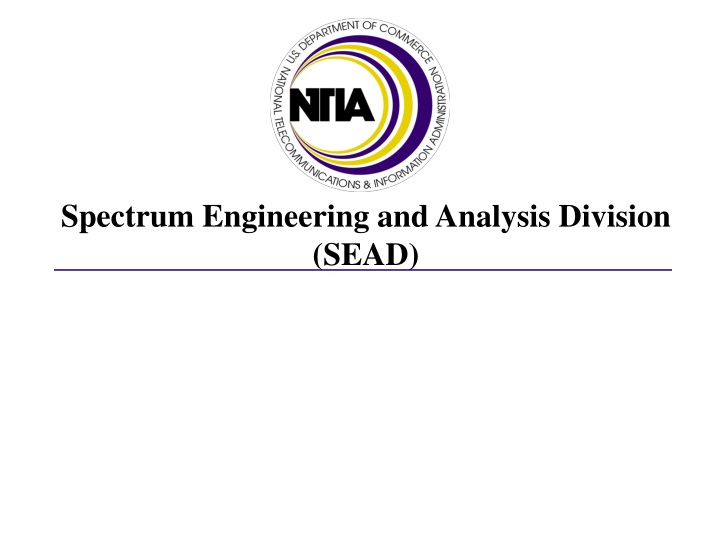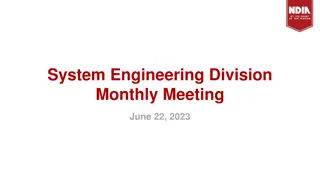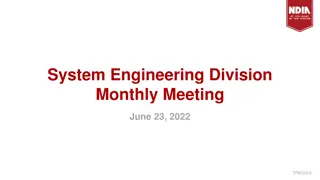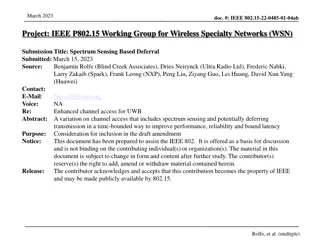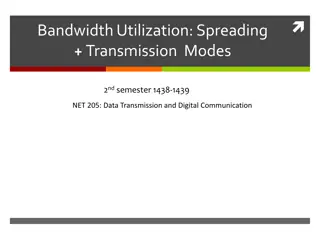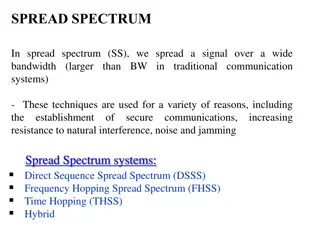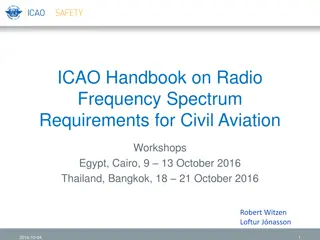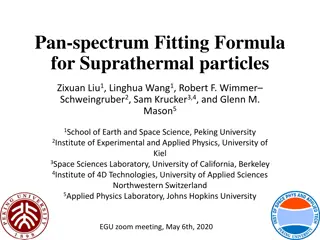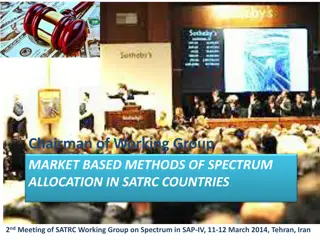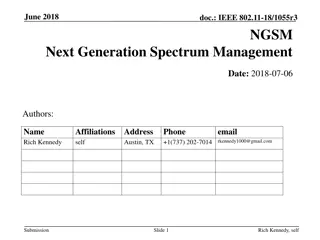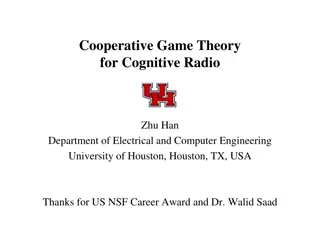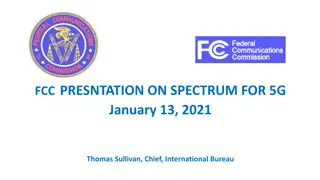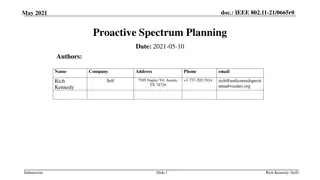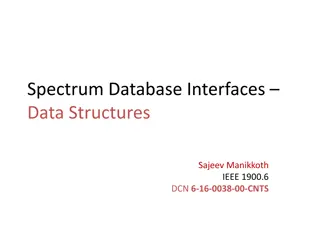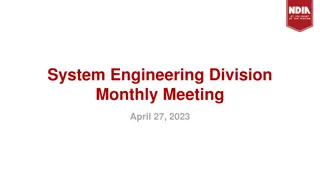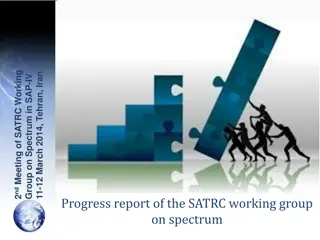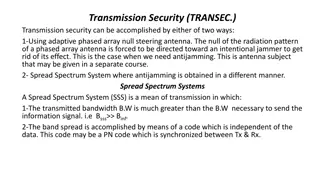Spectrum Engineering and Analysis Division (SEAD)
The Spectrum Engineering and Analysis Division (SEAD) is NTIA’s leading engineering and analysis group, examining present and planned equipment use for spectrum efficiency and effectiveness. SEAD works on resolving operational conflicts and exploring innovative spectrum sharing solutions, playing a key role in coordinating conflicting spectrum requirements through new approaches. Evaluating new technologies to enhance spectrum usage, SEAD ensures spectrum availability for emerging technologies.
Download Presentation

Please find below an Image/Link to download the presentation.
The content on the website is provided AS IS for your information and personal use only. It may not be sold, licensed, or shared on other websites without obtaining consent from the author.If you encounter any issues during the download, it is possible that the publisher has removed the file from their server.
You are allowed to download the files provided on this website for personal or commercial use, subject to the condition that they are used lawfully. All files are the property of their respective owners.
The content on the website is provided AS IS for your information and personal use only. It may not be sold, licensed, or shared on other websites without obtaining consent from the author.
E N D
Presentation Transcript
Outline Overview Technical Subcommittee Spectrum Studies Innovative Spectrum Sharing Solutions U.S. Department of Commerce National Telecommunications and Information Administration 2
Overview The Spectrum Engineering and Analysis Division (SEAD), is NTIA s lead engineering and analysis group. SEAD examines the present and planned equipment to be used in order to determine if the use of the spectrum will be efficient and effective, whether the potential for sharing Federal and non-Federal radio services and systems exist, and whether the effects of planned and proposed national and international allocations may alter the ability of Federal agencies to complete their mandated missions. SEAD works to resolve operational conflicts that may arise between Federal agencies in using the spectrum. If a satisfactory resolution within the existing policies and procedures cannot be reached. SEAD plays an active role as coordinator of the process of meeting the conflicting spectrum requirements through new and innovative approaches. Solving these problems demands analyses of the effects that proposed changes in frequency assignments, operational procedures, or equipment will have on the electromagnetic environment, all the while taking into consideration the various tradeoffs between technical and operational factors. SEAD evaluates new technologies that can be used to increase the efficiency with which the Federal and private sector use the radio spectrum, making spectrum available for emerging technologies. U.S. Department of Commerce National Telecommunications and Information Administration 3
Technical Subcommittee SEAD Chairs the IRAC Technical Subcommittee (TSC) that assists NTIA in addressing issues that relate to the technical aspects of the use of the electromagnetic spectrum, as well as such other matters as directed by the IRAC which includes: - development of recommendations concerning new technical standards and improvement of existing standards pertaining to use of the radio frequency spectrum; - maintaining awareness of automated analysis and radio propagation programs that can be used for evaluating and making recommendations leading to a better utilization of the radio frequency spectrum; - evaluation and recommendations, in the form of technical reports, on new and existing techniques from the standpoint of their ability to optimize use of the radio frequency spectrum; and - evaluation and recommendations, in the form of technical reports, regarding the electromagnetic compatibility capabilities and needs of the federal agencies in support of spectrum management, including techniques and criteria leading to greater inter- and intra-radio service sharing of available radio frequency spectrum resources. U.S. Department of Commerce National Telecommunications and Information Administration 4
Spectrum Studies Examples of spectrum studies performed by SEAD include: Compatibility of Federal Systems Operating in the 5850-5925 MHz Band with Intelligent Transportation Systems and Unlicensed National Information Infrastructure Devices available at https://www.ntia.doc.gov/report/2020/compatibility-federal- systems-operating-5850-5925-mhz-band-intelligent-transportation. Study of potential sharing between federal systems and a variety of non-federal commercial wireless operations in the 3450-3550 MHz band available at https://www.ntia.gov/report/2020/technical-feasibility-sharing-federal-spectrum-future- commercial-operations-3450-3550 Quantitative Assessments of Spectrum Usage available at https://www.ntia.doc.gov/files/ntia/publications/ntia_quant_assessment_report- no_appendices.pdf U.S. Department of Commerce National Telecommunications and Information Administration 5
Innovative Spectrum Sharing Solutions As a result of an SEAD s technical work NTIA is pioneering in partnership with the DOD in an innovative dynamic spectrum-sharing concept, called Incumbent Informing Capability (IIC). The IIC when implemented will give accelerated spectrum access to commercial networks while still allowing federal agencies to accomplish their critical spectrum- dependent missions. NTIA Report: IIC for Time-Based Spectrum Sharing, available at https://www.ntia.doc.gov/report/2021/ntia-report-incumbent-informing-capability-iic- time-based-spectrum-sharing U.S. Department of Commerce National Telecommunications and Information Administration 6
